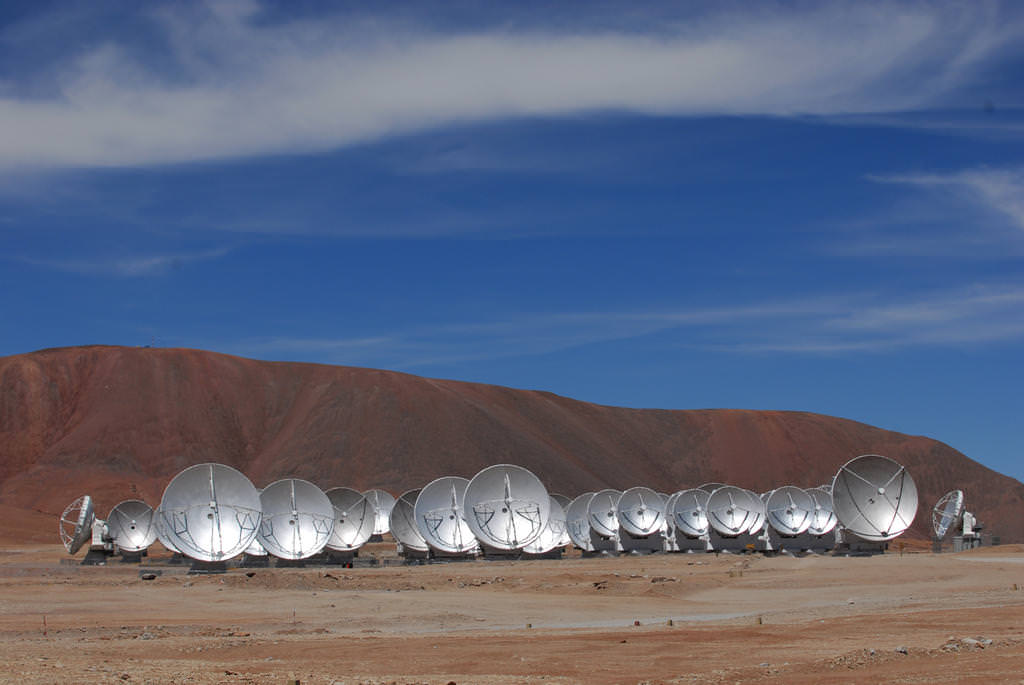The ALMA telescope is getting a new set of receivers, enabling it to detect wavelengths down to 8.5 mm. These wavelengths are crucial for observations of the transformative epoch of reionization, when the first stars to appear in the universe unleashed a fury of radiation.
ALMA, the Atacama Large Millimeter/sub-millimeter Array, is located on the Chajnantor plateau in Chile, one of the driest and highest places in the world. The array is perfectly suited to studying a variety of radio sources in the universe, but until now it’s been handicapped.
ALMA’s 66 antennas capture electromagnetic waves with a variety of wavelengths, but without the proper backend receivers many of those wavelengths cannot be studied. Until now, ALMA has covered the wavelength range from 0.3 to 3.6 mm. The latest upgrade consists of a set of receivers that are sensitive from 6 to 8.8 mm.
The upgrade was led by Taiwan’s Academia Sinica Institute of Astronomy and Astrophysics (ASIAA), accompanied by an international team comprising the National Astronomical Observatory of Japan (NAOJ), the University of Chile, the National Radio Astronomy Observatory (NRAO), the Herzberg Institute of Astrophysics in Canada and the National Chung-Shan Institute of Science and Technology in Taiwan.
The new wavelengths are perfectly suited to study two science targets in particular. One is the epoch of reionization, which occurred when the universe was less than a billion years old. The first stars to come online in the universe flooded the cosmos with high-energy radiation, which ripped away the neutral plasma and ionized almost all the gas. The universe has remained in that ionized state since then, but so far there have been no direct observations of this epoch.
The new wavelengths will also help astronomers study larger dust grains in star-forming regions and protoplanetary disks, which will hopefully provide a rich source of information on the process of star and planetary formation.

